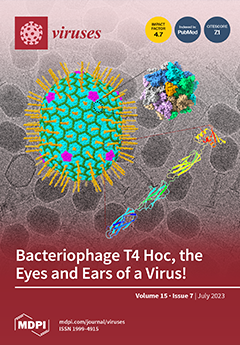In recent years, hepatitis E virus (HEV) infection has been found to be widespread among different animal species worldwide. In Bulgaria, high HEV seropositivity was found among pigs (60.3%), wild boars (40.8%), and East Balkan swine (82.5%). The aim of the present study
[...] Read more.
In recent years, hepatitis E virus (HEV) infection has been found to be widespread among different animal species worldwide. In Bulgaria, high HEV seropositivity was found among pigs (60.3%), wild boars (40.8%), and East Balkan swine (82.5%). The aim of the present study was to establish the seroprevalence of HEV among dogs, cats, horses, cattle, sheep, and goats in Bulgaria. In total, 720 serum samples from six animal species were randomly collected: dogs—90 samples; cats—90; horses—180; cattle—180; sheep—90; and goats—90. The serum samples were collected from seven districts of the country: Burgas, Kardzhali, Pazardzhik, Plovdiv, Sliven, Smolyan, and Stara Zagora. The animal serum samples were tested for HEV antibodies using the commercial Wantai HEV-Ab ELISA kit (Beijing, China). The overall HEV seroprevalence among different animal species from Bulgaria was as follows: dogs—21.1%; cats—17.7%; horses—8.3%; cattle—7.7%; sheep—32.2%; and goats—24.4%. We found the lowest overall HEV seropositivity in Plovdiv district (6.2%; 4/64;
p = 0.203) and Smolyan district (8.8%; 4/45;
p = 0.129), vs. the highest in Pazardzhik district (21.6%; 29/134;
p = 0.024) and Burgas district (28.8%; 26/90;
p = 0.062). To the best of our knowledge, this is the first serological evidence of HEV infection in dogs, cats, horses, cattle, sheep, and goats from Bulgaria. We found high HEV seropositivity in small ruminants (sheep and goats), moderate seropositivity in pets (dogs and cats), and a low level of seropositivity in large animals (horses and cattle). Previous Bulgarian studies and the results of this research show that HEV infection is widespread among animals in our country. In this regard, the Bulgarian health authorities must carry out increased surveillance and control of HEV infection among animals in Bulgaria.
Full article






